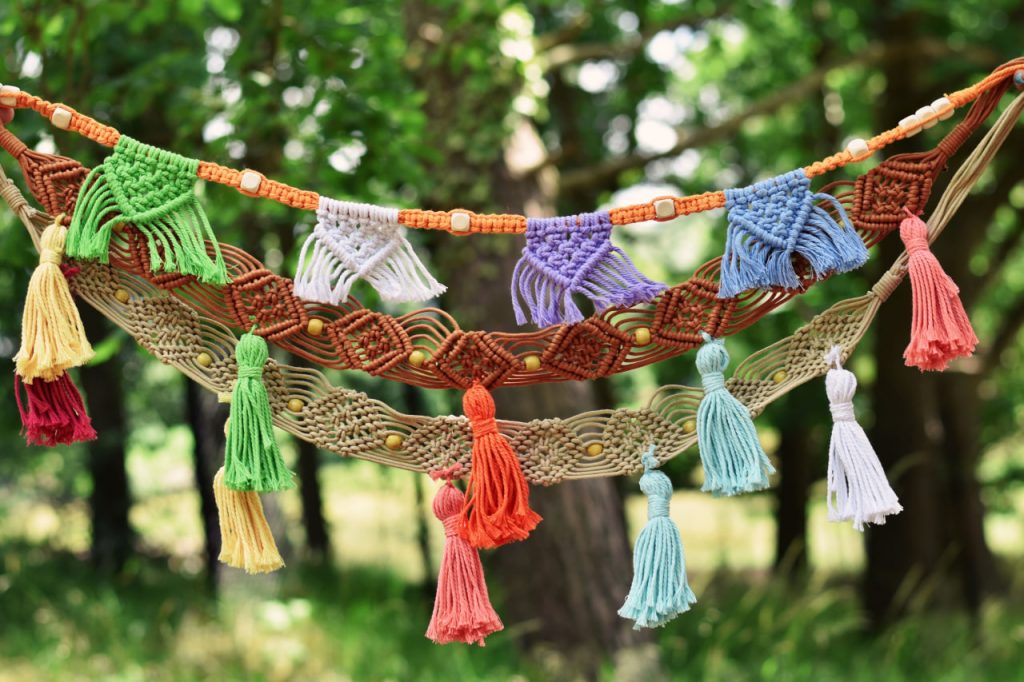Starting a new craft can be overwhelming, especially when you’re faced with a multitude of tools and materials to choose from. If you’re diving into the world of macrame, having the right tools at your disposal is crucial to ensuring that your projects are both beautiful and successful. Whether you’re creating a small keychain or a large wall hanging, understanding the essential tools for macrame will make your crafting experience smoother and more enjoyable. In this article, we’ll break down the must-have tools for macrame beginners and explain how they can help elevate your work.
1. Macrame Cord
The most essential material for macrame is, of course, the cord. This is the foundation of every macrame project. There are various types of macrame cords available, each offering a different texture and feel to your work. Some of the most popular types include:
- Cotton Cord: This is the most common type used in macrame. It’s soft, flexible, and easy to work with. It’s ideal for beginners and is often used in plant hangers, wall hangings, and other decorative pieces.
- Jute Rope: Known for its rustic look, jute rope adds a natural, earthy feel to your projects. It’s commonly used for home décor items like rugs, wall hangings, and baskets.
- Nylon Cord: This is a smooth and strong cord, often used for more durable items like bags or jewelry.
Each type of cord has its own benefits, and your choice will depend on the type of macrame project you want to create and the texture you prefer.
2. Scissors
Having a sharp pair of scissors is essential in any craft, and macrame is no exception. You’ll need scissors to cut your cords to the proper lengths, trim excess thread, and tidy up the edges of your knots. When choosing scissors, look for a pair with a sharp edge that can easily cut through thicker cords, like jute or nylon. Investing in a good-quality pair will save you time and frustration.
3. Macrame Board or Surface
While you can technically do macrame anywhere, using a macrame board or surface will make your life much easier. A macrame board provides a stable surface to work on and usually has grid lines to help with measurements and knot placements. It’s particularly useful for beginners, as it helps keep your cords organized and ensures your work stays straight. If you don’t have a macrame board, you can also use a corkboard or any surface with pins to keep your work in place.
4. Pins or Clips
Pins or clips are necessary for holding your cords in place while you work, preventing them from slipping or tangling. As you create your knots, it’s easy for the cords to shift or get tangled, so using pins or clips helps to stabilize your project and keep it organized. Most macrame artists use regular sewing pins, but you can also use bulldog clips or specialized macrame clips for larger projects.
5. Measuring Tape
Accurate measurements are key to creating symmetrical and balanced macrame pieces. A measuring tape will help you cut your cords to the right lengths and ensure that each knot is placed correctly. You don’t need anything fancy—just a simple, flexible measuring tape will do the job.
6. Comb or Brush
Once you’ve completed your macrame project, especially if it involves fringe, you may want to add texture to the finished piece. A comb or brush is perfect for this task. Gently comb through the fringe to separate the threads and create a fuller, more polished look. This is particularly important for projects like wall hangings, where the fringe is a focal point of the design.
7. Wooden Dowels or Rings
Many macrame projects, like wall hangings and plant hangers, require a base to which you can attach your knots. Wooden dowels or rings are commonly used for this purpose. They provide a sturdy structure that holds your macrame work in place. You can find these dowels or rings in various sizes, depending on the project you’re creating.
8. Needle for Cord Threading
A macrame needle or tapestry needle is a handy tool that helps with threading your cords through knots or through the base of a project. This is especially useful when you’re working with thin cords or need to finish the ends of your work neatly. The needle makes it easier to hide any excess cord or secure it into place without creating visible knots.
9. Glue Gun (Optional)
While macrame typically uses knots for fastening cords, a glue gun can be a useful tool for finishing off your project. If you need to secure the ends of your cords or prevent them from fraying, a little hot glue can help. It’s also handy for adding embellishments like beads, stones, or other decorative elements to your macrame designs.
10. Beads and Embellishments (Optional)
While not strictly necessary for every macrame project, beads and embellishments can add a unique touch to your work. Whether you want to add color, texture, or visual interest to your piece, beads, buttons, and other decorative elements can make your project stand out. They are often incorporated into plant hangers, necklaces, or bracelets to add a personalized and artistic flair.
Final Thoughts
Having the right tools is essential for any craft, and macrame is no exception. By investing in the necessary materials, like macrame cords, scissors, and pins, you’ll ensure that your projects are not only easier to complete but also look more professional. As you advance in your macrame journey, you’ll discover even more tools and accessories that will help enhance your work. Happy knotting, and enjoy the creative process!

